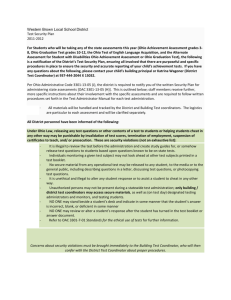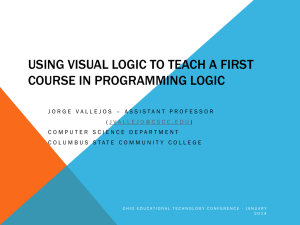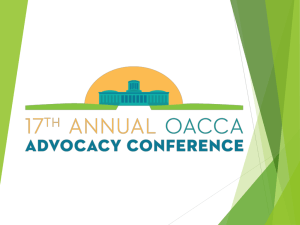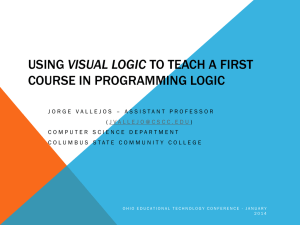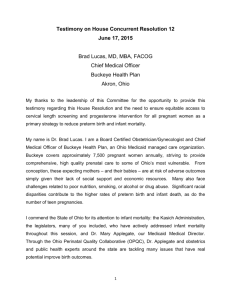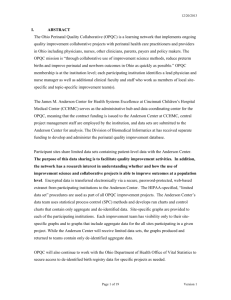House Healthcare Efficiencies Study Committee Sept 22, 2015 By
advertisement
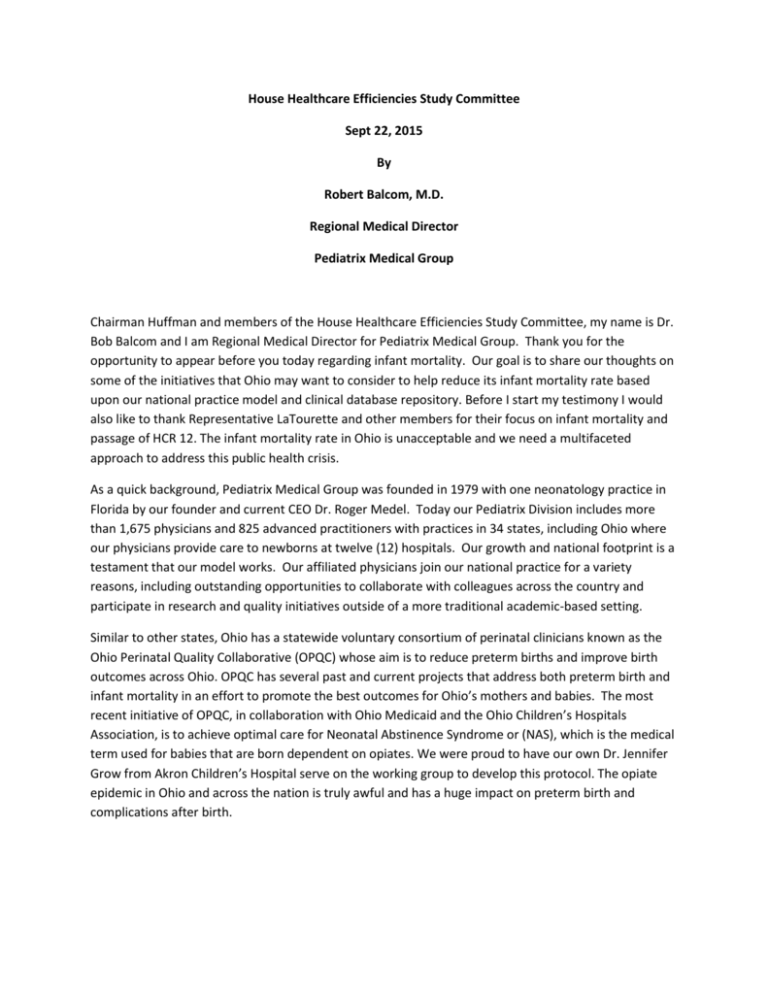
House Healthcare Efficiencies Study Committee Sept 22, 2015 By Robert Balcom, M.D. Regional Medical Director Pediatrix Medical Group Chairman Huffman and members of the House Healthcare Efficiencies Study Committee, my name is Dr. Bob Balcom and I am Regional Medical Director for Pediatrix Medical Group. Thank you for the opportunity to appear before you today regarding infant mortality. Our goal is to share our thoughts on some of the initiatives that Ohio may want to consider to help reduce its infant mortality rate based upon our national practice model and clinical database repository. Before I start my testimony I would also like to thank Representative LaTourette and other members for their focus on infant mortality and passage of HCR 12. The infant mortality rate in Ohio is unacceptable and we need a multifaceted approach to address this public health crisis. As a quick background, Pediatrix Medical Group was founded in 1979 with one neonatology practice in Florida by our founder and current CEO Dr. Roger Medel. Today our Pediatrix Division includes more than 1,675 physicians and 825 advanced practitioners with practices in 34 states, including Ohio where our physicians provide care to newborns at twelve (12) hospitals. Our growth and national footprint is a testament that our model works. Our affiliated physicians join our national practice for a variety reasons, including outstanding opportunities to collaborate with colleagues across the country and participate in research and quality initiatives outside of a more traditional academic-based setting. Similar to other states, Ohio has a statewide voluntary consortium of perinatal clinicians known as the Ohio Perinatal Quality Collaborative (OPQC) whose aim is to reduce preterm births and improve birth outcomes across Ohio. OPQC has several past and current projects that address both preterm birth and infant mortality in an effort to promote the best outcomes for Ohio’s mothers and babies. The most recent initiative of OPQC, in collaboration with Ohio Medicaid and the Ohio Children’s Hospitals Association, is to achieve optimal care for Neonatal Abstinence Syndrome or (NAS), which is the medical term used for babies that are born dependent on opiates. We were proud to have our own Dr. Jennifer Grow from Akron Children’s Hospital serve on the working group to develop this protocol. The opiate epidemic in Ohio and across the nation is truly awful and has a huge impact on preterm birth and complications after birth. Pediatrix was instrumental in the passage of legislation in Missouri that expanded the reimbursement for and availability of donor breast milk. Research confirms the benefits of human milk, including protection from respiratory and gastrointestinal infections during infancy. We also were way ahead of the curve in developing our Electronic Medical Record, BabySteps®. We have used this database to enhance our bedside services by evaluating our care and implementing changes that have had measureable and significant benefits to our patients. For instance, as a result of our ability to better chart and follow the care we provide, our system has led directly to a program that has significantly reduced the number of premature infants burdened with the terrible disability of blindness or severe vision impairment-known as Retinopathy of Prematurity or (ROP). Finally I would like to discuss a critical component to the issue before us, physician recruitment. Among the 34 states in which we provide services, Ohio ranks at the bottom in terms of its Medicaid compensation for neonatologist services. This is becoming increasingly critical especially in light of the expansion of Medicaid as a greater percentage of overall payer mix. Please keep in mind that as neonatologists we take all patients regardless of their payment source, unlike some office-based practices which limit or cap the percentage of Medicaid patients they will serve. In this regard, other states will have a distinct advantage over Ohio, with two-thirds of the states averaging 75% of Medicare or higher for reimbursement of hospital-based neonatal and pediatric services. Ohio pays an average of 65% of Medicare across all services but averages just 41% of Medicare for hospital-based neonatal and pediatric services. Let me say that again, Ohio Medicaid pays the doctors who take care of the most vulnerable kids well below average in Ohio and well below surrounding states and the nation. This disparity must be corrected, as it is a critical factor in continuing to provide quality-driven initiatives and excellent access to care. Our group recruits neonatologists from across the country, and often, what we see, is that our Ohio doctors have some sort of connection to Ohio whether family or perhaps training here. Without this family or education connection, we have a tough time recruiting quality physicians to practice in Ohio. Healthcare is rapidly evolving and competition for recruits is only intensifying, and my personal opinion is that more neonatologists coming out of fellowship will consider the payment rates for Medicaid in a particular state as they weigh their ability to earn income. In closing, thank you again for the opportunity to provide this testimony today. Healthcare is rapidly changing and we believe there are some clinical and other initiatives that Ohio can undertake to improve the health outcomes of its newborns. We look forward to working with you and your colleagues as a state and even national resource. Mr. Chairman, with your permission, I would be happy to answer any questions that you or the committee members may have.
